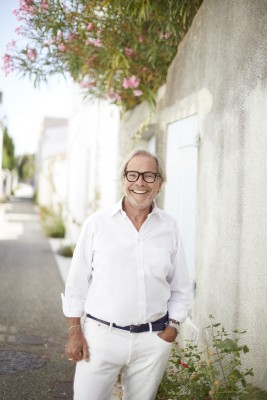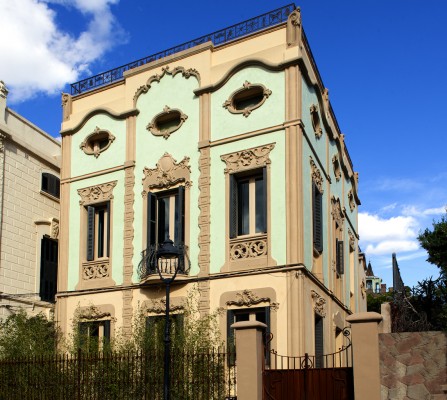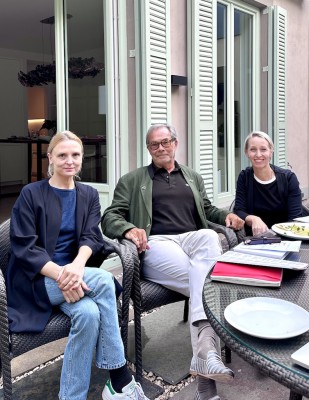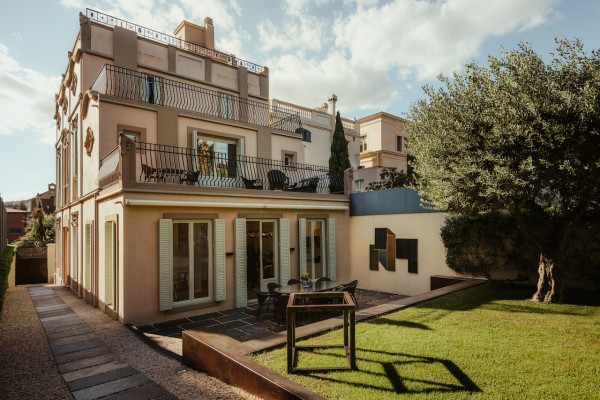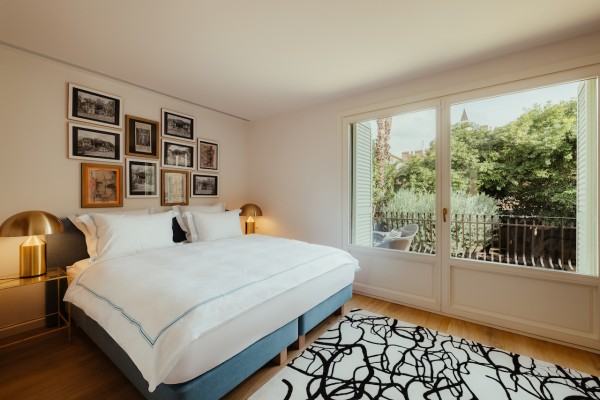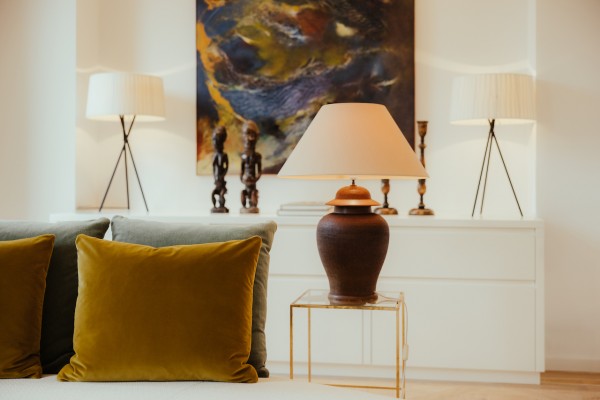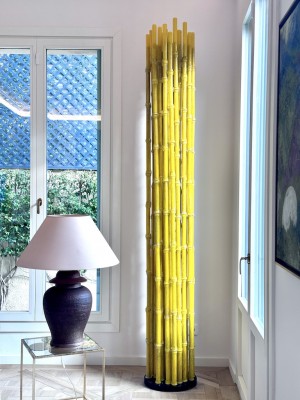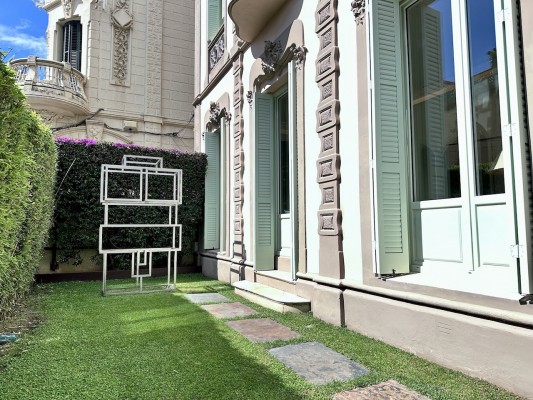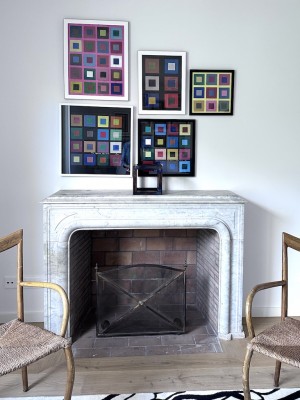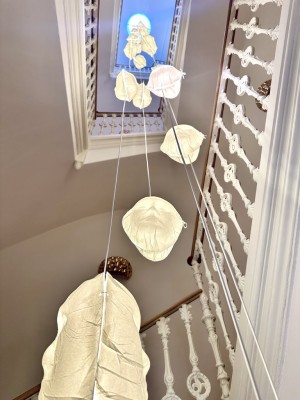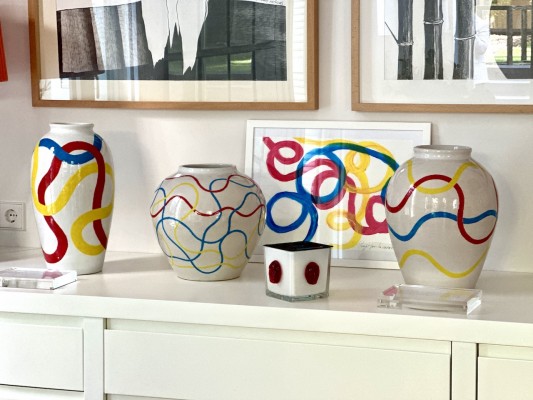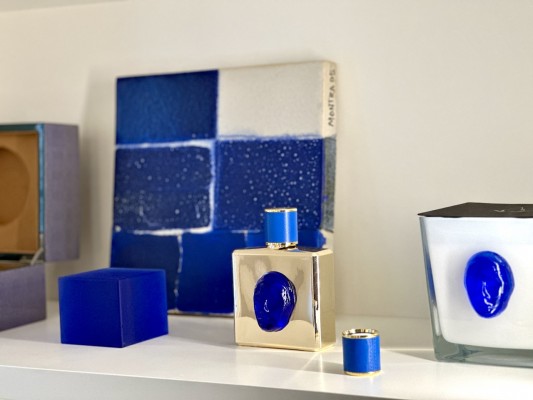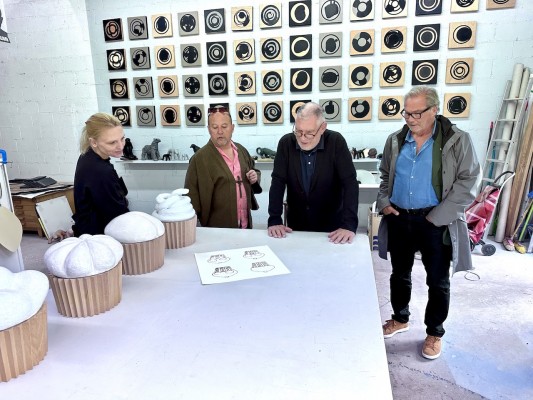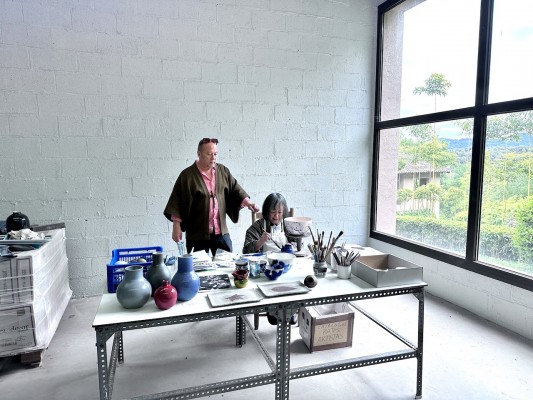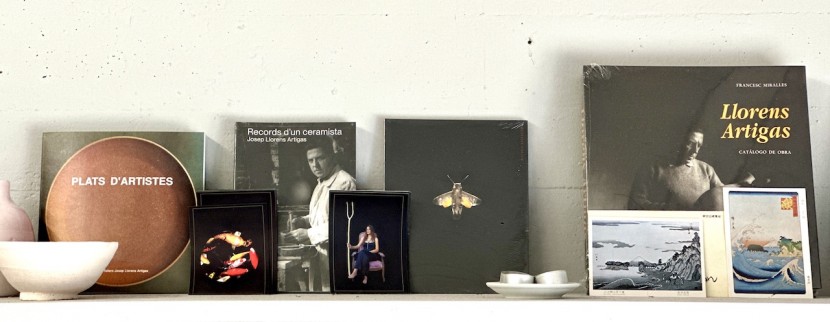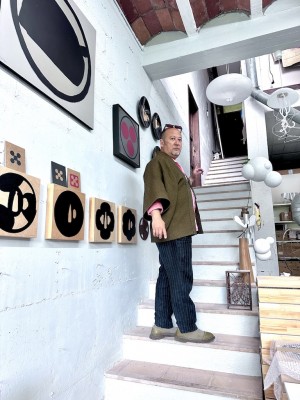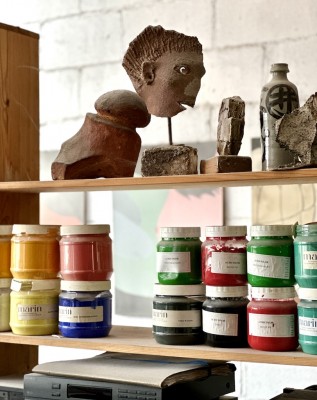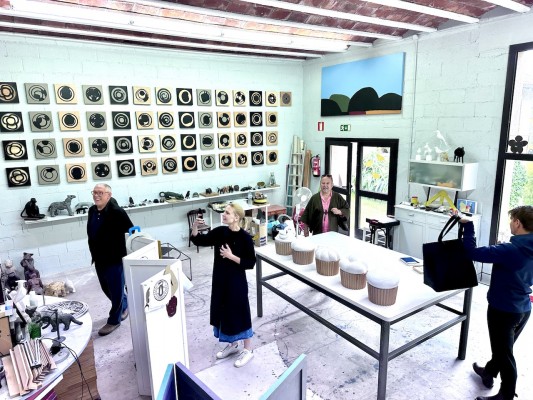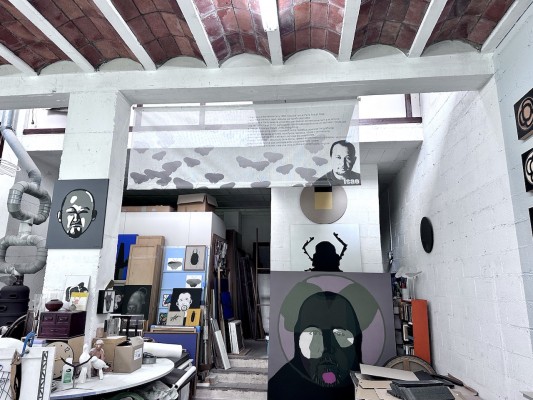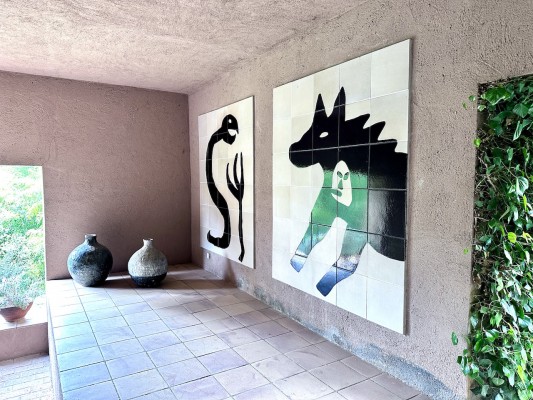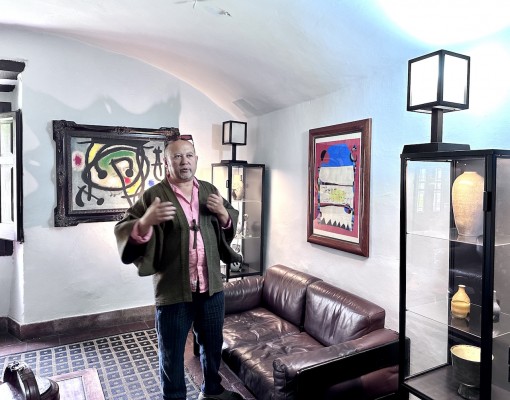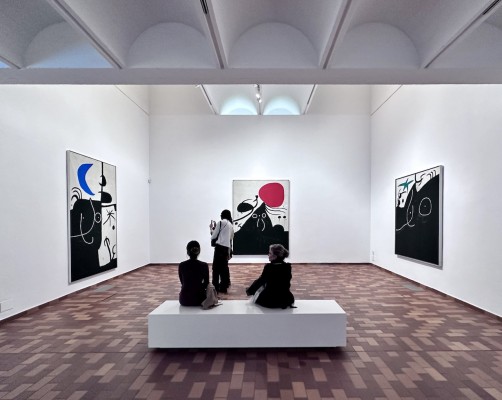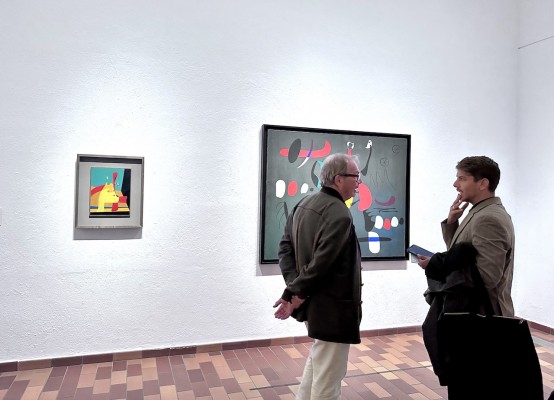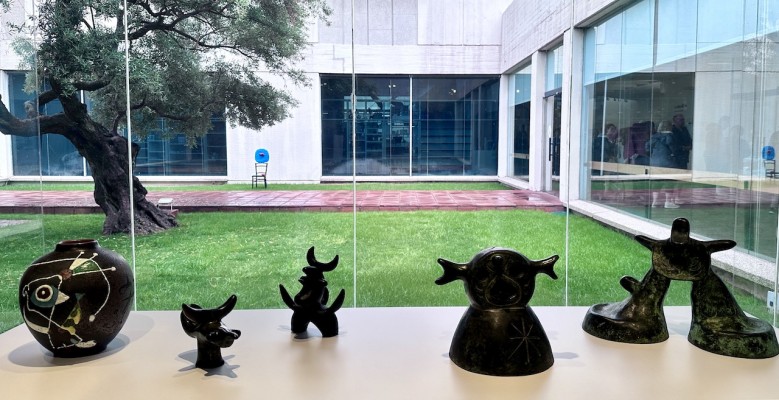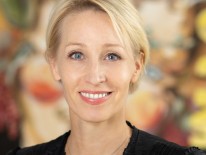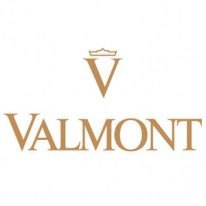Valmont als schweizer Zellkosmetikhersteller schöpft aus Erkenntnissen der Wissenschaft, Medizin, Natur und Kunst. Didier Guillon, Gründer und Inhaber der Marke ist Gastgeber in den vier sog. Valmont-Residenzen, die als besondere Orte der Begegnung fungieren. Hier unser Interview.
Unter dem Überthema "Beauty meets Art & Hospitality" – eine Verbindung von Kunst und Schönheit – durfte ich eine sehr inspirierende Reise in eine der vier Residenzen erleben und Didier Guillon, den Inhaber und Gründer von Valmont und der 'Fondation Valmont' kennen lernen.
Das Interview wurde auf Englisch geführt und wir möchten es Ihnen gern in der Orignialversion präsentieren:
Maren Boettcher
Didier Guillon, thank you very much in advance for giving me the opportunity to explore "Art and beauty" with you, two exciting "spiritual" alchemies.
My first question:
We are sitting here in the beautiful Casa Maxence in Barcelona. One of the four Valmont residences. How do you combine the effect of space through architecture and art with your high-quality cosmetics brand Valmont?
DG: There's one specific space which can do something. It's the treatment-cabin. It is in every residence. You have the possibility there to have a Valmont-treatment. In Hydra the villa is smaller, so you'll have the facial inside if it's too hot or you have it on the terrace facing the sea. In Verbier, you have a beautiful spa with four cabins. Here in Casa Maxence you have one cabin. In Venice we're working on a new location, new space in the Palacio, welcoming our guests. This is the most important element I would say, which connects the residences with Valmont. We give you the opportunity to have a facial, to relax, calm down and get inspired of the surrounding. And then the objective is each residence has a different location, different artists. For example, if you go to, Hydra, you will discover the artworks of a young artist, relating to Hydra. Here in Barcelona, in Casa Maxence, we we have Frédéric Amat, Pavel Roučka, Yves Lévêque, and artworks of the Foundation Llorens Artigas.
Here in Barcelona you see the importance of Llorens Artigas and of course, Miró. So, we also want to make reference to the artists who are exhibited at this location. We want local, we want that in every residence you have a feeling of... it could be my residence. It could be the place where I would like to live. Even if the decoration is not at 100 percent the own taste. I need to have a feeling of, I would say, I feel relaxed. I don't feel any stress. I don't feel any pressure. The area is very confidential. So I think it's the addition of all the elements which create, I would say the Valmont experience in our hospitality concept.
The brand Valmont and the 'Fondation Valmont' now also desires to offer it's guests one of the most precious things anyone can have: time. An invitation to a suspended moment, far from often hectic lifes, to enjoy an experience imbued with the Guillon family's art of living and entertaining. A pause for the mind where letting go is fine, and where the place's natural authenticity and contemporary art become one.
Beauty meets Art & Hospitality
The four Residences:
CHALET CAPUCINE | Verbier, Switzerland - Warm mountain luxury
VILLA VALENTINE | Hydra, Greece - Mediterranean outpost pride
RESIDENCE BONVICINI | Venice, Italy - Timeless Venetian elegance
CASA MAXENCE | Barcelona, Spain - Early 20th century Catalan cradle
DG: If you ask me, are you going to develop this concept somewhere else? I would say, yes, in Europe we have now four residences. We need one in U.S., we need one in Japan, and we need one in China. How are we going to do? Are we going to build something? Are we going to partnership? With a resort or Hotel who has the same values, the same sensibility. And who is ready to accept that we can come with some proposition, and especially of course, to take Valmont. So, well, I think we have now our four residences in Europe. We need the new ones, as mentioned, we working on, but the difficulties to find hotels with the same values, which outside of Europe represent the best in terms of sustainability.
It is said that a room must have atmosphere and soul so that you can arrive and feel well. It should touch the senses with their beauty and authenticity. Does art also act as a deliberate, subtle soul opener for your guests, for those who want to allow it?
I want to, to insist on the very important issue, to be conceptual, to have concepts. The aesthetic is something you can learn at school, learn a university, or have it by heritage. Most of the time, the hotel and it's very well are designed by professional, who had a fantastic education. It's very rare to find a designer who have been accumulating, different, I would say values or expression or emotion coming from the heritage.
And I want to insist that with Valmont, it's an heritage. No education. I've not been studying, you know, I have been collaborating. I'm still collaborating with people who can't have an education, but I know exactly what I want. You see this studio here in the garden, when I bought the villa (Casa Maxence), it was a garage. Horrible! Full of mess.
So I said, it's horrible. What can we do? And the guy said, we cannot do anything. Never. You will have the authorization to build. I say, okay, when are the neighbors going on holidays? He said, in August, I told him one month is okay to remove the garage and to build a new structure. He says, if you pay, I can do it. So in one month we had this new structure, a kind of art pavilion and a Japanese garden in front.
On the wall, you will see a painting of Charles, Charles Meyer, my grand, grand grandfather. Born in 1848. Why? Because it's precursor. The reason of something, you need to be a precursor yourself, or it can be also what something you have in the blood. And I feel it. I want, you know, with the hospitality to transmit to our clientele a different vision. New emotions. And we are just at the beginning. For example, tomorrow you will go to visit the Mirò Foundation and the Foundation Llorens Artigas. I don't know if you see what I mean. It's this notion of the values or the aesthetic of the heritage. To get new inspirations of our holistic concept.
Art such as masks, a bird sculpture, a white marble cage, a Japanese garden, a miniature version of a nude - symbols of freedom, contemplation, intimacy... as a pathfinder to the true self?
DG: Yes. But with two notions. One, we try to have perfect aesthetic. We want that your feeling is, even if it's not absolutely accurate, but you say, we like. And so far we open a door on the notion on the world is not absolutely perfect. We as human being are not absolutely perfect. If you look at the lighting object insight the Casa Maxence, the masks, you will see the mask is not perfect. It's not the image of the beauty. They are different. The face. And it's a metaphor on the, I would say, on the fact that the humanity is not perfect. We see today, but we need also protectors. So when you arrive, you have the nude, the nude is sort of wire, but he doesn't have weapons. The nude as a protector as a warrior, which is here for the protection.
In cosmetic treatments, make-up is first removed so that the cosmetic essences can work in depth, at cellular level. To bring beauty from the depths naturally and radiantly to the outside. You live and combine both worlds. Beauty with Valmont cosmetics and art with the Valmont Foundation. Is architecture and art a journey of the senses for you – a Make-up removal for revival | transformation?
DG: We put a step in a very philosophical discussion. If we just stick to the notion of aesthetic, it's clear we are the first level. Our mission to help your skin to regenerate and getting radiant again. When you put this concept first level inside the residence, I describe our vision we had using these pictures: If you go to Bhutan, it's one of the most zen destination where you have the nature so beautiful, where you have these temples. When you have the mountains surrounding and everything, but not aggressive, very imagine that you have a temple, a monastery with monks. I would offer just a minimalistic "monk"- cell, because I know in this cell, I would have nothing. Just walls and a bed. And I want to deep down inside. Having any interference. But you have interference because you have all those artists on the walls. So you cannot say I am in a monk cell, but I want to have this important feeling of a deep down inside, meaning that the interference around, must be matching. This is our mission in the rooms of our four art-residences. This is important, the zen dimension. Let´s talk about certain hotels who have the pretension to tell you what is the essence of the design or the beauty. But definitely you often don't sleep well. Because you have so many horrible, I say horrible, things on the wall. In this case I would prefer, to have just a bed.
As a host, artist, art collector and entrepreneur, what experiences and insights into the effect of space would you like to share with a hotelier?
DG: The Reception. Everybody will say the room. The Impression, the first impression is so important. Why? The first thing you see, the first thing you feel, the first thing you smell, the first thing comes to your mind.
The lighting is so important. You know, I saw so many horrible reception where I definitely say, was it a good hotel?
Didier Guillon, thank you from the bottom of my heart for such an open conversation and the almost philosophical journey we took with our interview. It was very inspiring - thank you for this special opportunity, your invitation and your time.
Thank you Valerio (Valmont Communications, Press, and Events Manager Europe) and Peter, from Peter Sechehaye PR for the brilliant organization and the warm hosting.

